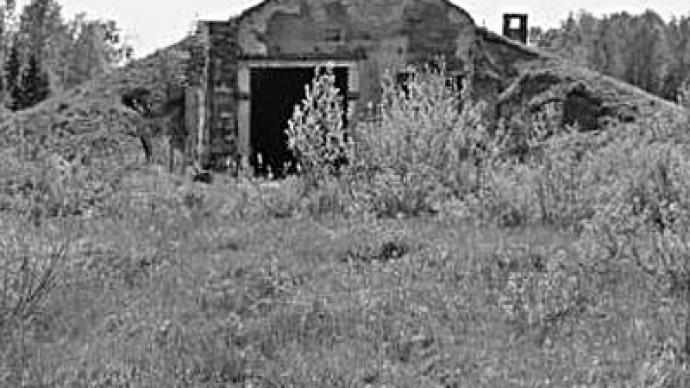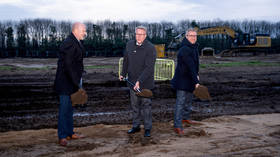Hitler’s Werewolf bunker: unexplored remnant of WWII

Final preparations are underway to mark Victory Day across Russia. But even decades after the end of WWII, some secrets from the war remain hidden.
Anyone today can enjoy a good walk in the forest near the central Ukrainian town of Vinnitsa. The tranquility of the area masks well what lurked there seven decades ago. The peaceful woods were once the site of a top-secret and highly-guarded Nazi command center – the Werewolf bunker.“It was a huge complex, which had everything Germany’s command could need. There was an officer’s club, a sauna, a gym, a swimming pool and barracks. Some sources claim it went seven floors underground. Above the ground there were several wooden houses including a casino,” explained Svyatoslav Greben, director of the Museum of Glory in Vinnitsa.Adolf Hitler ordered the construction of the bunker to control the Nazi war-effort on the Eastern Front. It is believed the Nazi leader himself visited the bunker three times, with his personal swimming pool thought to be about the only thing to remain intact at the site. The rest of the huge complex was destroyed in March 1944.The main entrance to the bunker was blown up by the retreating German forces. When Soviet troops arrived, they went inside the facility and realized it was rigged with explosives. They took no chances and blew up the other two entrances, burying the Werewolf’s secrets forever.To this day, it is not known what remains underground, as no one has ever managed to get inside the Nazi-era facility since the war. Many attempts have been made to gain access, but all have failed: the walls are massively thick, and the site is still restricted.The director of the local military museum believes the complex was deliberately preserved to prevent any intrusion.“The bunker was built by Soviet prisoners-of-war. That’s why its blueprints don’t differ from those of still functioning bunkers across the former USSR. Nobody will crack it open in the near future, because it is still a classified facility,” stated Greben.Though now it may seem just a pile of rocks, the local administration wants to turn the Werewolf’s ruins into a memorial – to be opened in June this year.“Over 14,000 Soviet people who had built the Werewolf facility and worked there were slaughtered by the fascists. That is why we want to put a fence around it and make it a memorial to the victims of fascism, to preserve their memory,” maintained Lyubov Spiridonova, deputy head of the Vinnitsa administration.Despite this being a seemingly patriotic idea, Ukraine’s Communist Party is not too happy about it, staging pickets in protest against the plan.“Those who came up with this idea should be fired and have a criminal case launched against them. They are building a monument to Hitler. Thus they are creating an official Mecca for neo-fascist movements, which are thriving in Ukraine,” insisted Pyotr Simonenko, leader of the Communist Party of Ukraine.The Werewolf bunker has been a meeting-place for right-wing skinheads in the past, as well as the target of endless speculation. Some claim it is radioactive. Others say it is cursed, as all the campaigns commanded from there – notably the battles of Stalingrad and Kursk – led to crucial Nazi defeats. But 70 years on, the seemingly dull ruins of a top-secret shelter remain a continued source of public curiosity and mystery.











